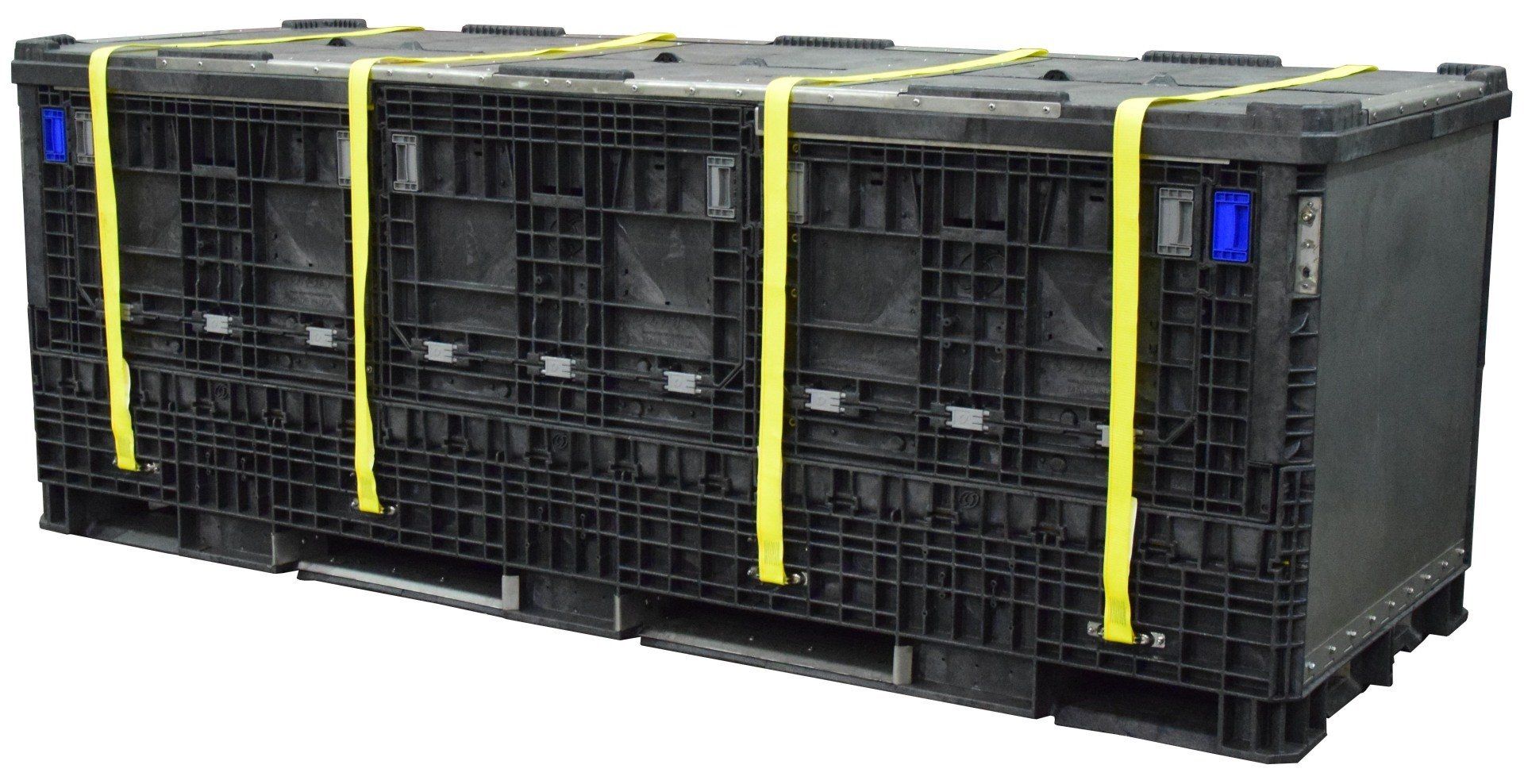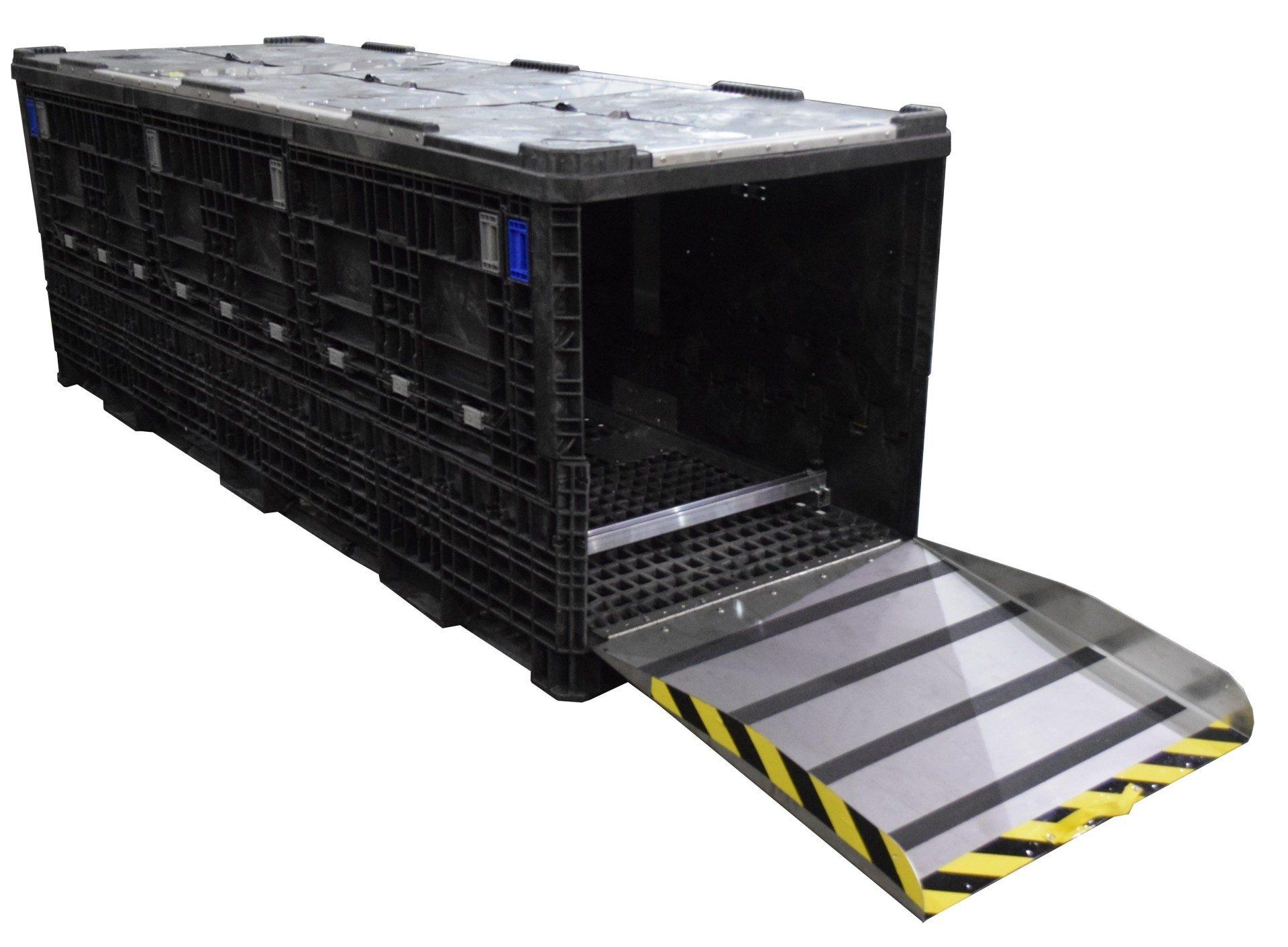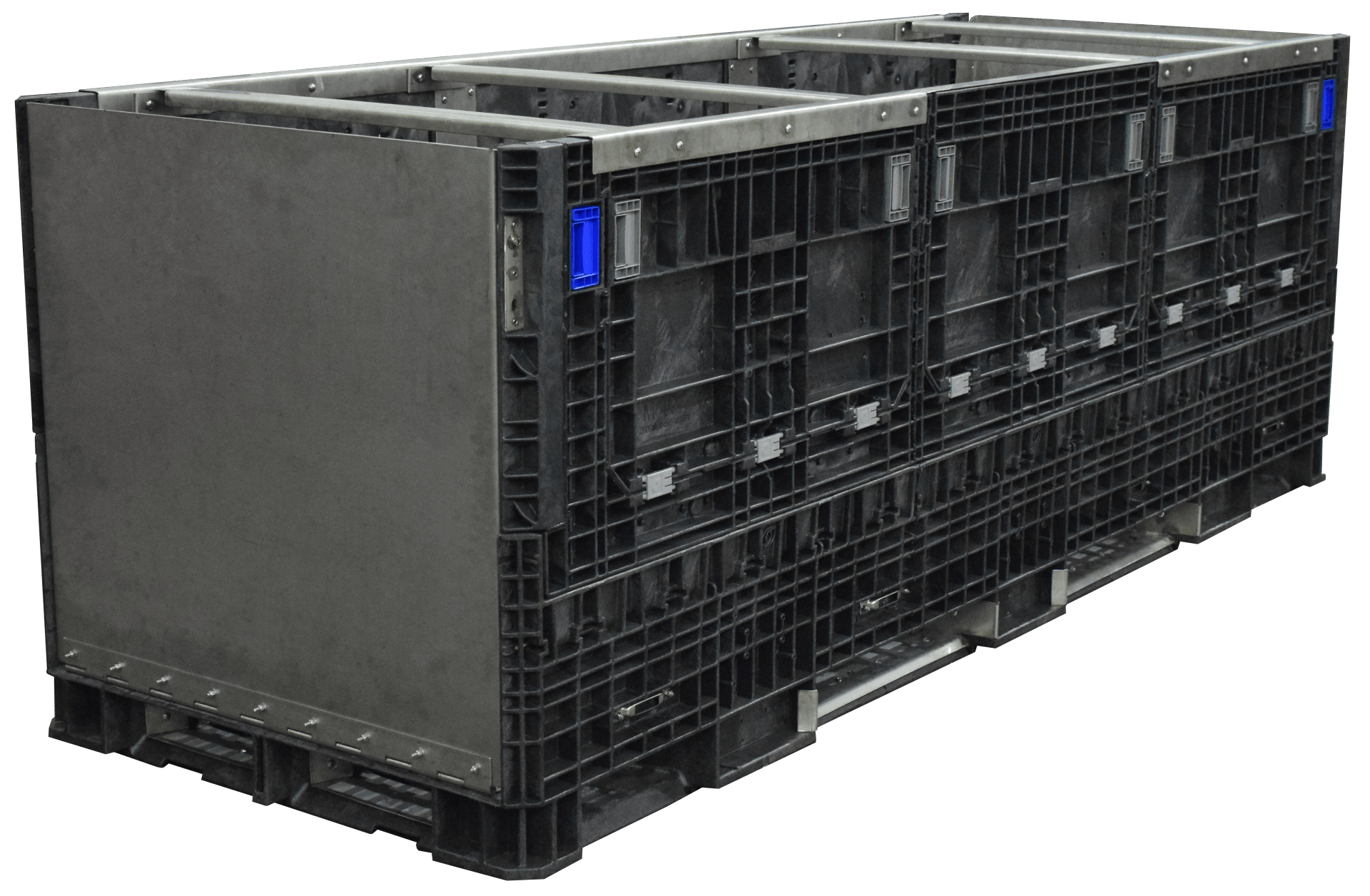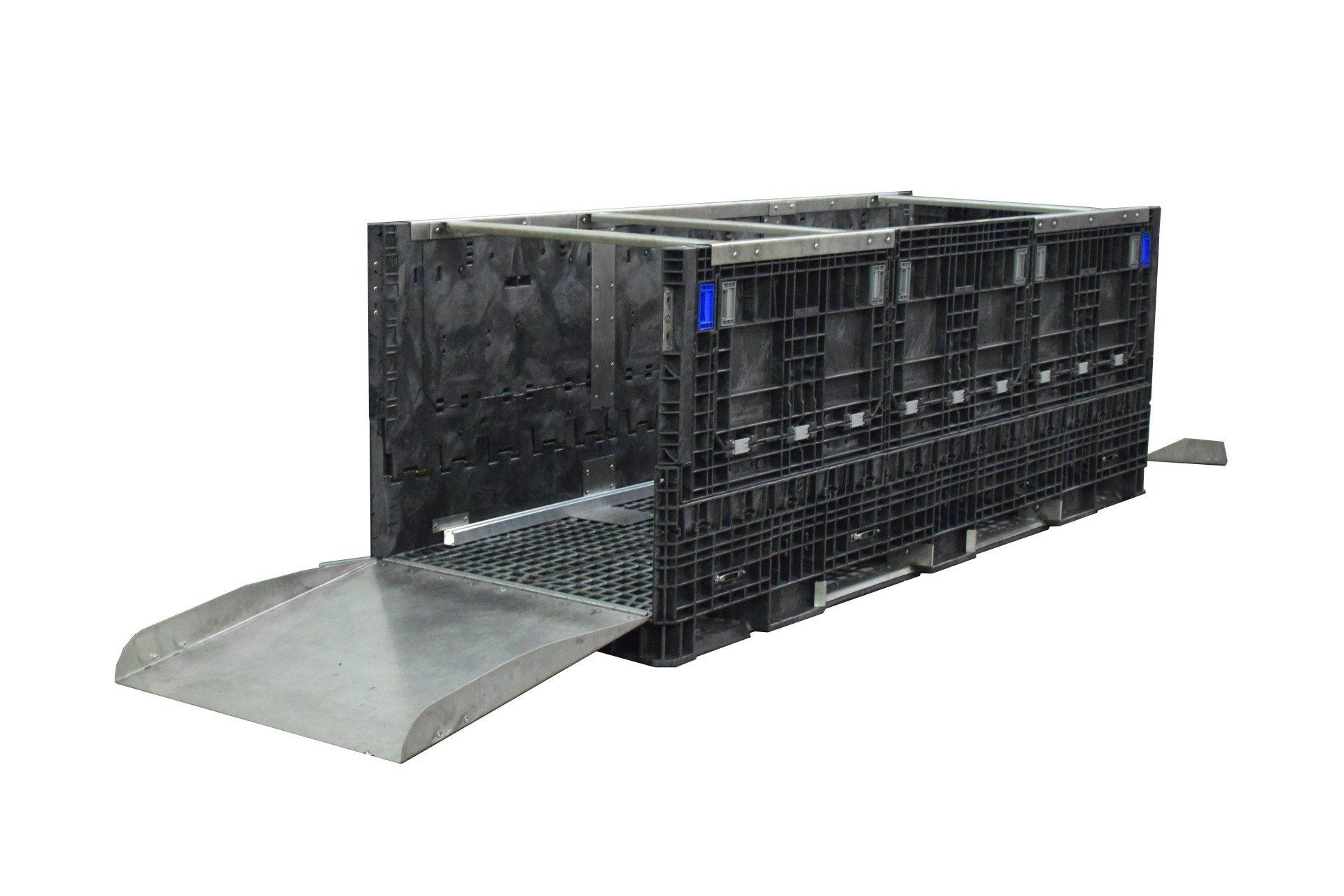Underwater Robotics
The Challenge
The customer needed to create a container to house their underwater robotic equipment. The container needed to be able to protect the robotic equipment while being transported and stored on ships. The size of the robotic equipment created several issues. The first issue we needed to solve was creating a container long enough to house the robotic equipment. The second issue is making the container strong enough to hold the weight of the robotic equipment. The third issue is creating an access point to load and unload the robotic equipment easily.
The Solution
We started with the issue of creating a container long enough to house the robotic equipment. We took three 45" x 48" x 42" collapsible bulk containers and cut and weld them together to achieve the length and width that the project required.
Next, we needed to take care of creating access points at both ends of the container. A stainless steel wall that doubles as a ramp were added to both ends of the container. The ramps have to be easily lowered so that the underwater robotic equipment can be safely rolled into the container and out of the container without causing any damage.
Steel reinforcement bars were added to the top of the container to keep the container from collapsing. The bars also give additional strength to the container since the two end walls have been removed to add stainless steel ramps.
To increase the protection of the container's contents, a reinforced lid was added. With the container being stored on the deck of a ship, the lid needed to be tightly secured to the container. Four heavy-duty straps were added to keep the lid securely attached, no matter the boat's movement or the amount of wind.
Inside the container, two rails run the length of the container. The purpose of the two rails is to hold the underwater robotic equipment securely in place, during transit, or while on the ever-moving deck of a ship.
The Results
With this container, the customer could be sure that their product was safe, secure and would keep it from moving while in transport and on the deck of ships. The container has two ramps one on each short end of the container so that the underwater equipment can be easily and safely rolled into or out of the container without causing damage. Inside the container there are two rails that run the length of the container. The purpose of the two rails is to old the underwater robotic equipment securely in place, during transit or while on the ever moving deck of a ship.










